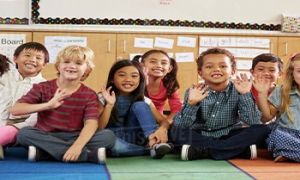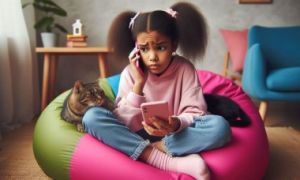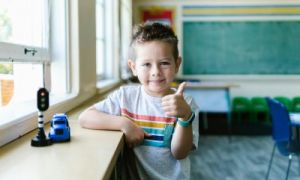Achieving EYLF Outcome 2: Children Are Connected With And Contribute To Their World in the babies' room developing a sense of connectedness and contribution to their world. The following article provides information on Strategies To Achieve Outcome 2 With Babies, Goals For Babies To Acheive EYLF Outcome 2, Example Activities That Link With Outcome 2 For Babies, and more.
Strategies To Achieve Outcome 2 With Babies
1. Build Secure Relationships
-
Consistent Caregivers: Ensure babies have consistent caregivers to form strong, trusting relationships.
-
Responsive Interactions: Respond promptly to babies' needs through eye contact, gentle touch, and soothing voices.
-
One-on-One Time: Spend individual time with each baby to foster a sense of security and attachment.
2. Create a Safe and Nurturing Environment
-
Familiar Objects: Incorporate familiar objects from home, like a favorite blanket or toy, to provide comfort.
-
Calm atmosphere: maintain a calm and predictable environment to help babies feel secure.
-
Soft Furnishings: Use soft furnishings, such as cushions and rugs, to create a cozy and safe space for exploration.
3. Encourage Exploration and Discovery
-
Sensory Play: Offer a variety of sensory toys and materials for babies to explore and stimulate their senses.
-
Safe Exploration: Provide a safe space for babies to move freely and explore their surroundings.
-
Interactive Play: Engage in interactive play that encourages babies to explore and discover their environment.
4. Support Individuality
-
Celebrate Milestones: Document and celebrate each baby's milestones, such as first steps or new words.
-
Personalized Spaces: Create personalized spaces, like cubbies or photo boards, to acknowledge each baby's uniqueness.
-
Cultural inclusion: Incorporate cultural elements from each baby's background into the environment and activities.
5. Foster Emotional Development
-
Emotion Recognition: Use facial expressions and simple language to help babies recognize and express their emotions.
-
Comfort Objects: Allow babies to have their comfort objects during transitions and routines.
-
Positive Reinforcement: Use positive reinforcement to encourage desired behaviors and build confidence.
6. Collaborate with Families
-
Parent Communication: Maintain open communication with families about their child's development and daily experiences.
-
Family Involvement: Include families in the program through regular updates, photos, and participation in activities.
-
Cultural Sensitivity: Respect and incorporate the cultural backgrounds of the families into your program.
7. Sensory Experiences
-
Mirror Play: Place unbreakable mirrors at the babies' level to let them see and recognize themselves.
-
Texture Exploration: Provide a variety of textured materials like soft cloth, sponges, and wooden blocks for tactile exploration.
By incorporating these strategies, you can help babies develop a strong sense of identity and belonging, fostering their overall development and well-being.
Goals For Babies To Acheive EYLF Outcome 2
Here are some goals for babies to achieve EYLF Outcome 2: Children Are Connected With And Contribute To Their World:
1. Develop Secure Relationships
-
Trust Building: Develop strong, trusting relationships with caregivers through consistent, responsive interactions.
-
Attachment and Bonding: Foster strong attachments with primary caregivers and educators to create a secure base for exploration.
2. Encourage Exploration and Discovery
-
Curiosity and Interest: Show curiosity in exploring different toys and activities, leading to the development of individual preferences.
-
Safe Exploration: Provide a safe environment where babies can explore freely and confidently.
3. Promote Social Interactions
-
Positive Interactions: Engage in positive interactions with peers and adults, starting to form early social relationships.
-
Sharing and Turn-Taking: Begin to understand the concepts of sharing and taking turns during play and interactions with others.
4. Support Emotional Development
-
Emotion Recognition: Help babies recognize and express their emotions using simple language and facial expressions.
-
Comfort and Security: Provide comfort objects and consistent routines to help babies feel secure and supported.
5. Encourage Cultural Awareness
-
Cultural Experiences: Introduce elements of their own cultural background and those of others in their environment.
-
Family Involvement: involve families in sharing their cultural practices and traditions to create a rich, inclusive environment.
6. Foster Communication Skills
-
Non-Verbal Communication: Encourage the use of gestures, pointing, and facial expressions to convey needs and wants.
-
Early Language Skills: Support the development of early language skills, such as babbling, cooing, and simple words.
7. Promote Understanding of the Natural World
-
Nature Exploration: Provide opportunities for babies to explore natural materials and outdoor environments.
-
Sensory Experiences: Offer a variety of sensory experiences, such as water play, sand, and natural objects, to stimulate curiosity about the world.
Example Activities That Link With Outcome 2 For Babies
Here are some example activities that link with Outcome 2: Children Are Connected With And Contribute To Their World for babies:
1. Nature Exploration
-
Outdoor Play: Take babies outside to explore the textures of grass, sand, and leaves. Allow them to touch and feel different natural materials.
-
Nature Walks: Go on short nature walks around the center's garden or outdoor area, letting babies observe and interact with the environment.
2. Cultural Celebrations
-
Family Photo Wall: Create a photo wall with pictures of the babies' families and cultural artifacts. This helps them feel connected to their families and cultural heritage.
-
Cultural Story Time: Read books and tell stories that reflect the diverse cultures of the children in the group.
3. Sensory Play
-
Water Play: Provide shallow containers of water with floating toys for babies to splash and explore.
-
Texture Exploration: Offer a variety of textured materials, such as soft cloths, sponges, and wooden blocks, for babies to touch and explore.
4. Interactive Play
-
Mirror Play: Place unbreakable mirrors at the babies' level so they can see their reflections and interact with themselves and others.
-
Peek-a-Boo Games: Play simple peek-a-boo games using cloths or hands to help babies understand object permanence and enjoy social interaction.
5. Community Connections
-
Family Visits: Invite family members to visit and spend time with the babies, sharing songs, stories, or cultural practices.
-
Community Helpers: Arrange visits from community helpers, such as firefighters or police officers, to introduce babies to important community roles.
6. Music and Movement
-
Cultural Music: Play music from different cultures and encourage gentle movement and dance activities.
-
Sing-Along Sessions: Organize sing-along sessions with songs from various cultural backgrounds, allowing babies to experience different rhythms and melodies.
7. Artistic Expression
-
Handprint Art: Create handprint art projects that allow babies to make their mark and feel a sense of accomplishment.
-
Messy Play: Set up a messy play area with safe, washable paints and sensory materials for babies to explore.
By incorporating these activities, you can support babies in developing a sense of connection to their world and contribute to their overall development.
Further Reading
Achieving EYLF Outcome 1 In The Babies Room
Version 2.0 EYLF Outcome 2
Activity Ideas To Promote EYLF Outcome 2
EYLF Learning Outcomes Version 2.0
How Children Achieve EYLF Learning Outcomes Version 2.0
How Educators Promote EYLF Outcomes 2.0
Learning Goals And Activities To Achieve EYLF Learning Outcome 2


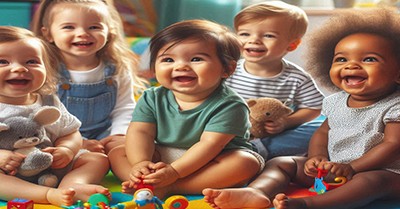



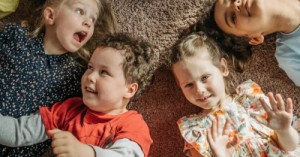
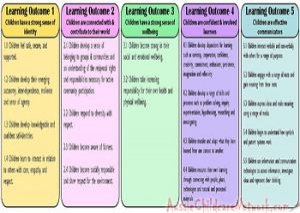 Here is the list of the EYLF Learning Outcomes that you can use as a guide or reference for your documentation and planning. The EYLF
Here is the list of the EYLF Learning Outcomes that you can use as a guide or reference for your documentation and planning. The EYLF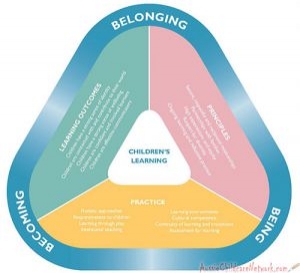 The EYLF is a guide which consists of Principles, Practices and 5 main Learning Outcomes along with each of their sub outcomes, based on identity,
The EYLF is a guide which consists of Principles, Practices and 5 main Learning Outcomes along with each of their sub outcomes, based on identity, This is a guide on How to Write a Learning Story. It provides information on What Is A Learning Story, Writing A Learning Story, Sample
This is a guide on How to Write a Learning Story. It provides information on What Is A Learning Story, Writing A Learning Story, Sample One of the most important types of documentation methods that educators needs to be familiar with are “observations”. Observations are crucial for all early childhood
One of the most important types of documentation methods that educators needs to be familiar with are “observations”. Observations are crucial for all early childhood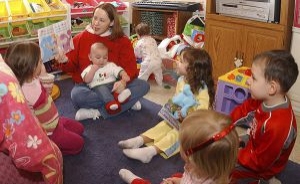 To support children achieve learning outcomes from the EYLF Framework, the following list gives educators examples of how to promote children's learning in each individual
To support children achieve learning outcomes from the EYLF Framework, the following list gives educators examples of how to promote children's learning in each individual Reflective practice is learning from everyday situations and issues and concerns that arise which form part of our daily routine while working in an early
Reflective practice is learning from everyday situations and issues and concerns that arise which form part of our daily routine while working in an early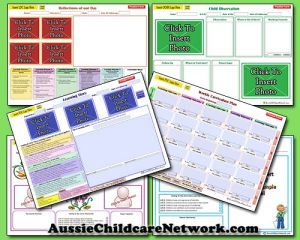 Within Australia, Programming and Planning is reflected and supported by the Early Years Learning Framework. Educators within early childhood settings, use the EYLF to guide
Within Australia, Programming and Planning is reflected and supported by the Early Years Learning Framework. Educators within early childhood settings, use the EYLF to guide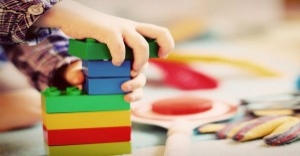 When observing children, it's important that we use a range of different observation methods from running records, learning stories to photographs and work samples. Using
When observing children, it's important that we use a range of different observation methods from running records, learning stories to photographs and work samples. Using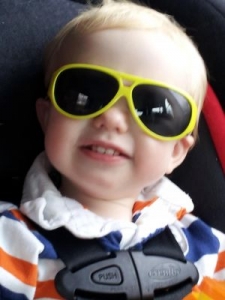 This is a guide for educators on what to observe under each sub learning outcome from the EYLF Framework, when a child is engaged in
This is a guide for educators on what to observe under each sub learning outcome from the EYLF Framework, when a child is engaged in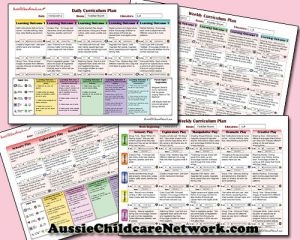 The Early Years Learning Framework describes the curriculum as “all the interactions, experiences, activities, routines and events, planned and unplanned, that occur in an environment
The Early Years Learning Framework describes the curriculum as “all the interactions, experiences, activities, routines and events, planned and unplanned, that occur in an environment